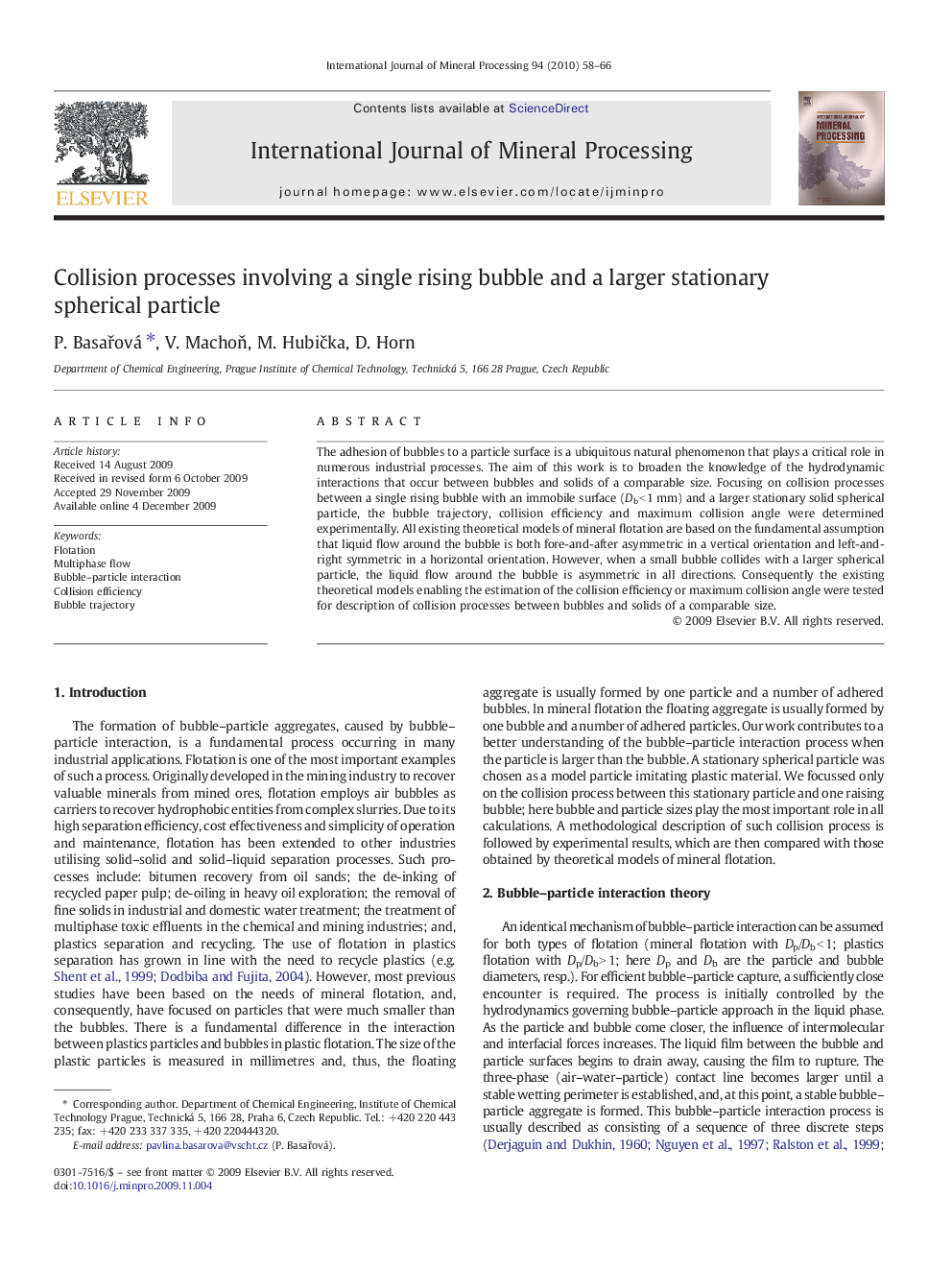| Article ID | Journal | Published Year | Pages | File Type |
|---|---|---|---|---|
| 214366 | International Journal of Mineral Processing | 2010 | 9 Pages |
The adhesion of bubbles to a particle surface is a ubiquitous natural phenomenon that plays a critical role in numerous industrial processes. The aim of this work is to broaden the knowledge of the hydrodynamic interactions that occur between bubbles and solids of a comparable size. Focusing on collision processes between a single rising bubble with an immobile surface (Db < 1 mm) and a larger stationary solid spherical particle, the bubble trajectory, collision efficiency and maximum collision angle were determined experimentally. All existing theoretical models of mineral flotation are based on the fundamental assumption that liquid flow around the bubble is both fore-and-after asymmetric in a vertical orientation and left-and-right symmetric in a horizontal orientation. However, when a small bubble collides with a larger spherical particle, the liquid flow around the bubble is asymmetric in all directions. Consequently the existing theoretical models enabling the estimation of the collision efficiency or maximum collision angle were tested for description of collision processes between bubbles and solids of a comparable size.
